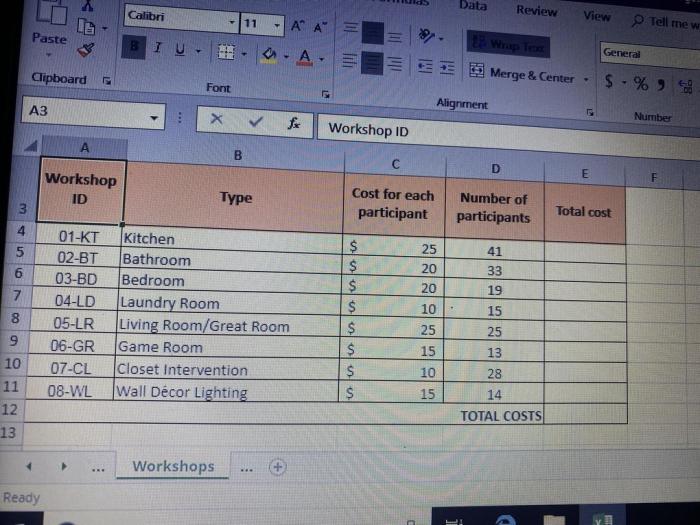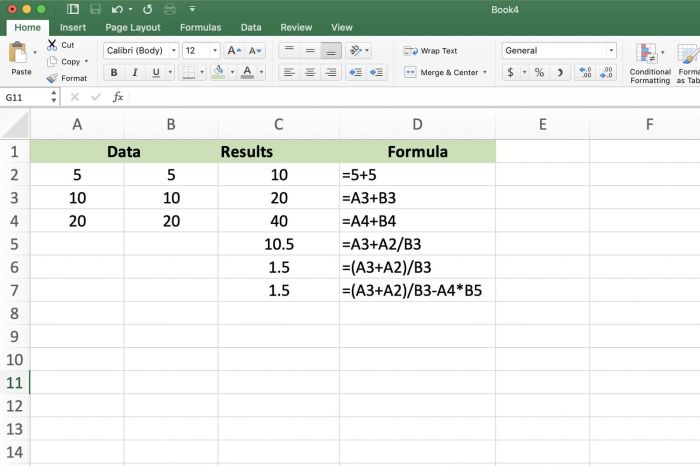In cell e4 create a formula – In this comprehensive guide, we delve into the realm of creating formulas in cell E4. Whether you’re a novice or an experienced user, this guide will equip you with the knowledge and techniques to master this essential spreadsheet skill.
We’ll explore the different types of formulas, provide step-by-step instructions for creating and formatting them, and discuss advanced techniques for enhancing their functionality. Along the way, we’ll also cover common errors and how to troubleshoot them.
Understand the Task
Creating a formula in cell E4 serves a specific purpose within the context of a larger spreadsheet or document.
Specific Requirements
To ensure the formula meets the intended purpose, it is crucial to identify its specific requirements. These requirements may include:
- The desired output or calculation to be performed.
- The input values or references used in the formula.
- Any constraints or limitations that apply to the formula.
Choose the Formula Type

Formula Options
- Basic Arithmetic Formulas:These formulas perform simple mathematical operations like addition, subtraction, multiplication, and division. They are easy to use and suitable for basic calculations.
- Logical Formulas:These formulas evaluate logical conditions and return TRUE or FALSE. They are useful for making decisions and branching calculations based on specific criteria.
- Lookup Formulas:These formulas search for values in a table or range and return the corresponding result. They are useful for retrieving data from large datasets.
- Statistical Formulas:These formulas calculate statistical measures such as average, variance, and standard deviation. They are useful for analyzing and summarizing data.
- Financial Formulas:These formulas perform financial calculations such as loan payments, interest rates, and net present value. They are useful for financial planning and analysis.
Advantages and Disadvantages
Each formula type has its advantages and disadvantages:
- Basic Arithmetic Formulas:
- Advantages:Simple to use, suitable for basic calculations.
- Disadvantages:Limited functionality, not suitable for complex calculations.
- Logical Formulas:
- Advantages:Useful for making decisions and branching calculations.
- Disadvantages:Can be complex to use, prone to errors if conditions are not clearly defined.
- Lookup Formulas:
- Advantages:Efficient for retrieving data from large datasets.
- Disadvantages:Requires a well-organized table or range, can be slow for large datasets.
- Statistical Formulas:
- Advantages:Useful for analyzing and summarizing data.
- Disadvantages:Can be complex to use, requires an understanding of statistical concepts.
- Financial Formulas:
- Advantages:Useful for financial planning and analysis.
- Disadvantages:Requires an understanding of financial concepts, can be complex to use.
Create the Formula
Entering a formula into cell E4 involves several steps. Here’s a step-by-step guide:
Entering the Formula
- Select cell E4.
- Click on the formula bar at the top of the spreadsheet.
- Type the equal sign (=) to indicate the start of the formula.
- Enter the formula you want to use, such as “=SUM(A1:A10)” or “=AVERAGE(B1:B10)”.
- Press Enter to complete the formula.
Example Formulas
- =SUM(A1:A10): Adds the values in cells A1 to A10.
- =AVERAGE(B1:B10): Calculates the average of the values in cells B1 to B10.
- =IF(C1=”Yes”, “Approved”, “Rejected”): Returns “Approved” if cell C1 contains “Yes” and “Rejected” otherwise.
Format the Cell

Once you’ve created the formula, you’ll want to format the cell to display the results correctly.
Number Formats
Choose the appropriate number format to display the results as currency, percentage, date, or other formats.
Alignment, In cell e4 create a formula
Align the results left, right, or center within the cell to improve readability.
Borders
Add borders around the cell to highlight the formula results or separate them from other data.
Use Relative and Absolute References

When creating formulas in Excel, it’s important to understand the difference between relative and absolute cell references. Relative references adjust automatically when you copy or move the formula, while absolute references remain fixed to a specific cell.
Relative References
Relative references use the cell’s row and column relative to the formula’s location. For example, if you enter the formula “=A1+B1” in cell C1, the formula will add the values in cells A1 and B1. If you copy this formula to cell D2, it will automatically adjust to “=A2+B2”, adding the values in cells A2 and B2.
Absolute References
Absolute references use the dollar sign ($) to fix the reference to a specific cell. For example, if you enter the formula “=$A$1+B1” in cell C1, the formula will always add the value in cell A1 to the value in B1, regardless of where the formula is copied or moved.
Absolute references are useful when you want to ensure that a formula refers to a specific cell, even if the formula is moved or copied. For example, if you have a formula that calculates the total sales for a specific product, you might use an absolute reference to the cell containing the product name to ensure that the formula always refers to the correct product.
Handle Errors
Even the most seasoned spreadsheet users encounter errors when creating formulas. These errors can range from simple typos to more complex logical issues. It’s important to be able to identify and troubleshoot these errors to ensure the accuracy of your calculations.
Common Errors
- Syntax errors:These errors occur when the formula is not structured correctly, such as missing parentheses or using an invalid operator.
- Reference errors:These errors occur when the formula refers to a cell that does not exist or contains invalid data.
- Circular references:These errors occur when a formula refers to itself, creating an infinite loop.
- #DIV/0!:This error occurs when a formula attempts to divide by zero.
- #VALUE!:This error occurs when a formula contains invalid data, such as text in a numeric field.
Troubleshooting and Resolution
To troubleshoot errors, start by checking the formula for syntax errors. If the formula is syntactically correct, check the references to ensure they are valid. If you encounter a circular reference, you can use the “Circular Reference” tool in Excel to identify the offending cells.
For #DIV/0! and #VALUE! errors, check the data in the cells referenced by the formula. If the data is invalid, correct it and recalculate the formula. If the data is valid, you may need to modify the formula to handle the specific scenario.
Advanced Techniques

To create even more complex formulas, you can employ advanced techniques that leverage functions, arrays, and macros. These tools expand the capabilities of your formulas, allowing you to perform sophisticated calculations and automate tasks.
Functions are built-in formulas that perform specific tasks, such as mathematical operations, text manipulation, and logical comparisons. Arrays are groups of related data that can be used as inputs to formulas, enabling you to perform calculations on multiple values simultaneously.
Using Macros
Macros are automated sequences of commands that can be used to perform repetitive tasks, including creating and modifying formulas. Macros can greatly enhance your productivity by saving you time and reducing errors.
Create a Table with HTML Tags

An HTML table provides a structured way to organize data into rows and columns. It’s a powerful tool for presenting complex information in a clear and concise manner.
To create a table, use the
| tag. Here’s an example of a simple HTML table:
“`html
“`This table has three columns: Name, Age, and Occupation. It has three rows, each representing a person’s information. Inserting the Table into the DocumentTo insert the table into your HTML document, simply paste the code into the Create a Blockquote with HTML Tags
A blockquote is a way to highlight a section of text and indicate that it is a quotation or important information. In HTML, you can create a blockquote using the ExampleHere is an example of a blockquote:
Question Bank: In Cell E4 Create A FormulaWhat is the purpose of creating a formula in cell E4? Formulas in cell E4 allow you to perform calculations, manipulate data, and automate tasks within a spreadsheet. What are the different types of formulas that can be used in cell E4? There are various types of formulas, including arithmetic, logical, lookup, and statistical formulas. How do I format a cell to display formula results correctly? You can format the cell to display the results in a specific number format, alignment, or with borders. |
